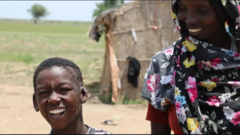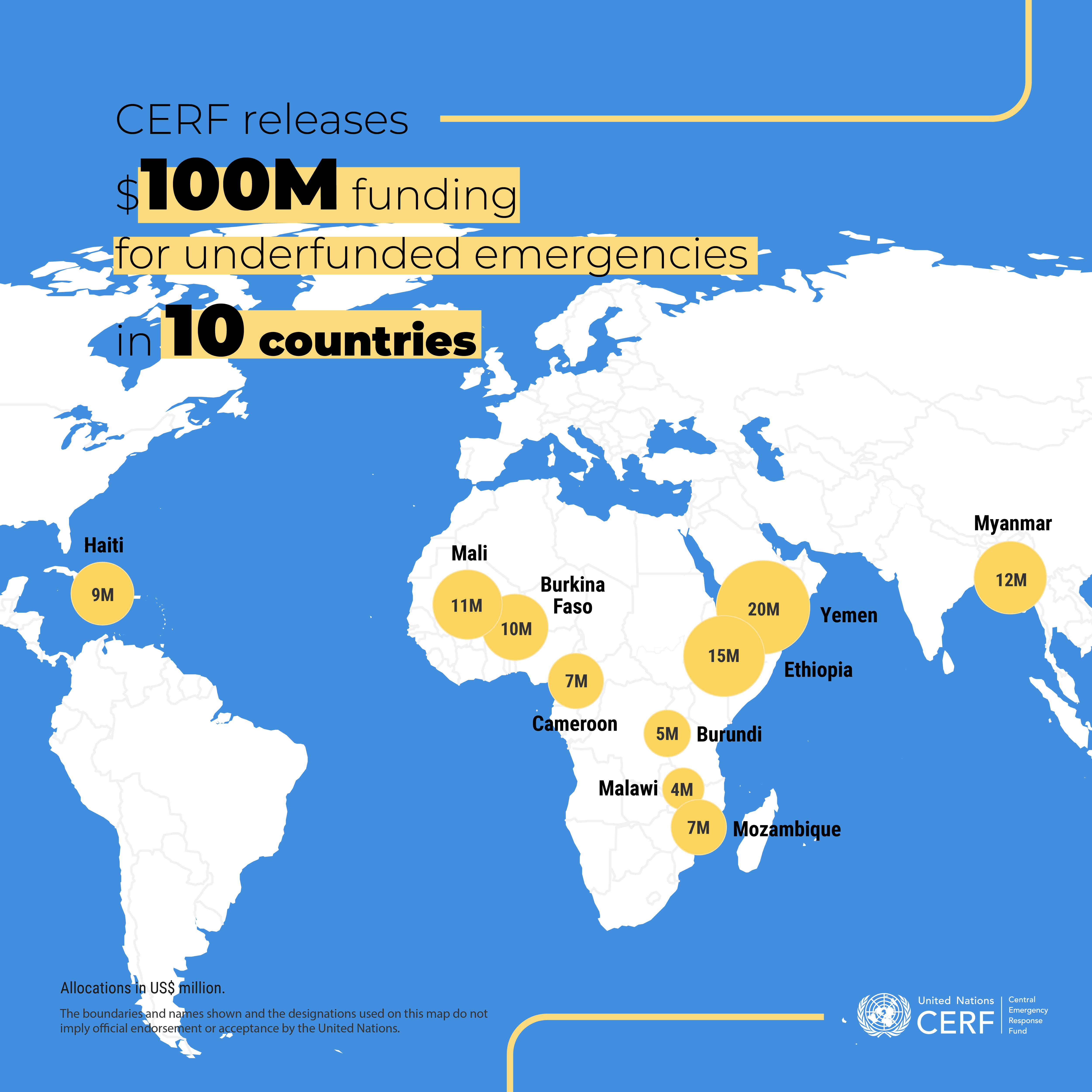Burkina Faso experiences the worst humanitarian crisis in its history, with an estimated ten per cent of the population - or more than two million people - internally displaced due to violence and insecurity. The humanitarian situation is dire and there are serious protection concerns, as well as security incidents affecting civilians which went up by 60 per cent in the first three quarters of 2023 compared to the previous year. Basic social services are increasingly overwhelmed, exacerbating humanitarian needs. Due to the conflict and violence in Burkina Faso, the number of People in Need in 2024 is 6.3 million people of which 3.8 million are targeted for humanitarian assistance. The number of people in need in 2023 was 4.6 million out of which 3.1 million were targeted with humanitarian assistance. The number of vulnerable people targeted with humanitarian assistance to quadruple since 2019, reaching a high of 3.8 million people in 2024.
Niger continues to face an acute and complex humanitarian crisis marked by the impact of persistent insecurity, epidemics, food insecurity and floods, all of which are exacerbated by the instable political situation. Between 2019 and 2020, the number of people targeted for assistance in Niger doubled to three million people in 2020 mainly due to the COVID-pandemic that year, but also as a result of the insecurity in the country that displaced millions of people. The number of people in need in 2023 was 4.3 million people and increased slightly to 4.5 million in 2024. The number of people targeted with humanitarian assistance has remained 2.7 million people in 2023 and in 2024.
The humanitarian crisis in Mali has worsened since 2021 due to an increase in and expansion of intercommunal violence and attacks by non-state armed groups in the central, southern and western regions. The volatile security situation is further exacerbated by structural vulnerabilities, socio-economic challenges, as well as climate change. In addition, around 65,000 people were affected by floods end of August 2024. Between 2019 and 2024 the number of people in need more than doubled from 3.2 million to 7.1 million people. The number of people targeted with humanitarian assistance followed the same trend and doubled from 2.3 million people to 5.4 million.
Between 2019 and 2024, humanitarian requirements in Central Sahel increased by 157 per cent from $894 million in 2019 to a high of $2.3 billion as of end-August 2024. The largest increase during this period was in Burkina Faso with an increase of 400 per cent between 2019 and 2024, followed by Mali (+117 per cent) and Niger (+73 per cent).
In Burkina Faso, which has the largest appeal in the region in 2024, UN and partners estimate they will need $935 million to provide life-saving assistance and protection services to some 3.8 million people. At the same time, investments to help people become more resilient to shocks are needed for displaced and non-displaced communities, especially for those remaining displaced for more than two years. The Humanitarian Response Plan (HRP) for Burkina Faso is 36 per cent funded as of end of August 2024.
Mali is marked by a complex crisis that derives from a volatile security situation exacerbated by structural vulnerabilities, socio-economic challenges, as well as climate change. The humanitarian requirements for Mali have increased every year since 2019.The largest increase was between 2019 and 2020 where the requirements increased by almost 50 per cent. Since 2020, the increase in requirements for the humanitarian appeals has continued until 2023. In 2024, the humanitarian appeal for Mali requires $701.5 million (minus seven per cent compared to 2023) to assist four million people and is 28.5 per cent funded as of end of August 2024.
In Niger, the appeal currently requires $662.2 million to assist 2.7 million people in need of humanitarian assistance and is currently 37.6 per cent funded as of end of August 2024. Requirements for the Niger HRP increased significantly in 2020 due to the COVID-19 pandemic. Since then, requirements have remained at an average of $5.8 million. Sanctions and development funding cuts following the 2023 coup d’etat risk pushing many more people into dependence on humanitarian aid if solutions cannot be found quickly to address them. Avoiding further cuts to humanitarian funding is essential to prevent a wider catastrophe and further spill-over of the crisis into coastal countries.
As of end August 2024, funding to the Central Sahel region is 13 per cent less than at the end of 2013 (minus $112 million). While it is still early to predict end-year coverage, the current humanitarian situation requires the full attention of donors and partners. Compared to the end of 2023, the largest decrease so far is in Mali (minus 21 per cent / -$49.7 million), followed by Niger (minus 16 per cent / - $42.6 million) and Burkina Faso (minus 6 per cent / -$20.1 million). The current funding gap for the region stands at $1.56 billion.
Event: On 26 October 2024, the Organisation for Islamic Cooperation and the Kingdom of Saudi Arabia in cooperation with OCHA and UNHCR will convene a Ministerial-level Conference for the Sahel and Lake Chad Basin. he event will provide a platform for donors to mobilize resources to help address the crisis.
For more information on the event, please contact Ms. Amani S.M. Salah, salah1@un.org
Since 2021, the Regional Humanitarian Fund for West and Central Africa provides a strategic response to the interconnected humanitarian needs of the Central Sahel region in Niger, Burkina Faso and Mali. The Fund prioritises integrated, multisector approaches, cross-border collaboration, and synergies between countries' allocations. Between 2021 and 2023, $93.2 million was contributed to the regional fund. As of end-August 2024, the total contributions to the Regional Humanitarian Fund for West and Central Africa amount to $24.1 million ($13 million for Burkina Faso; $7.7 million for Niger and $3.3 million for Mali).
In 2023, three allocations totalling $36.4 million in Burkina Faso ($20 million), Mali $5.3 million), and Niger ($11 million) were made to address the needs of crisis-affected populations impacted by food and nutrition insecurity, forced displacement due to armed violence and insecurity, and climate change. Twenty-nine per cent of the allocations provided direct funding to local and national actors.







